Google Pixel 10 Pro: Two-minute review
The Google Pixel 10 Pro is the phone I never expected Google to make – a smartphone that is more desirable than the best iPhone. In almost every way, Google’s flagship smartphone takes aim at its biggest competitor (and business partner) and hits the mark. It looks stunning, it takes stellar photos, and it’s a joy to use, with surprising features that make life easier. The Pixel 10 Pro delivers on promises Apple has failed to keep, and iPhone fans should take note – it might be time to consider an Android.
The Pixel 10 is also a nice phone, but the Pixel 10 Pro is a big step up in every way, inside and out. You don’t just get better hardware; even Google’s software is more capable on the Pixel 10 Pro, and the bonus features are ones I use all the time.
I’ve only had the Pixel 10 Pro for a week before this review posted, but I say all the time because I’ve been using the Pixel 9 Pro as my primary work phone for most of the past year. It doesn’t have all of the features or customization you’ll find on a Samsung Galaxy S25 Plus, but it offers the most useful tools I’ve found – and they actually work.
Remember when that used to be the saying for Apple: it just works? Not any more. My Pixel 10 Pro is the phone that makes my life easier. It screens my calls effectively, takes notes on important calls, and even translates my voice into another language seamlessly – in a voice that sounds eerily like my own! It really works – I tried it and it blew me away.
The new Magic Cue tries hard to be helpful. Mention a dinner reservation in a text message and a small, totally unobtrusive bubble will link to your OpenTable email. If somebody asks you for a friend’s phone number, Magic Cue will bring it up from your contact list in a small window, right in Messages.
You might not even notice it’s happening, and that’s the way AI on a phone should be. It should happen in the background and make my life easier. It shouldn’t make silly photos or rewrite my notifications. It should be helpful, but limited. So far, that’s Magic Cue.
I’ve seen more extravagant AI promises from Apple, Samsung, and even Motorola, but Google is delivering the most useful AI to help me get things done with my phone. I’ve talked to Google about how Magic Cue will improve in the months ahead, and I think it might be one of the most useful AI tools you’ll use – even if you won’t always know you’re using it.
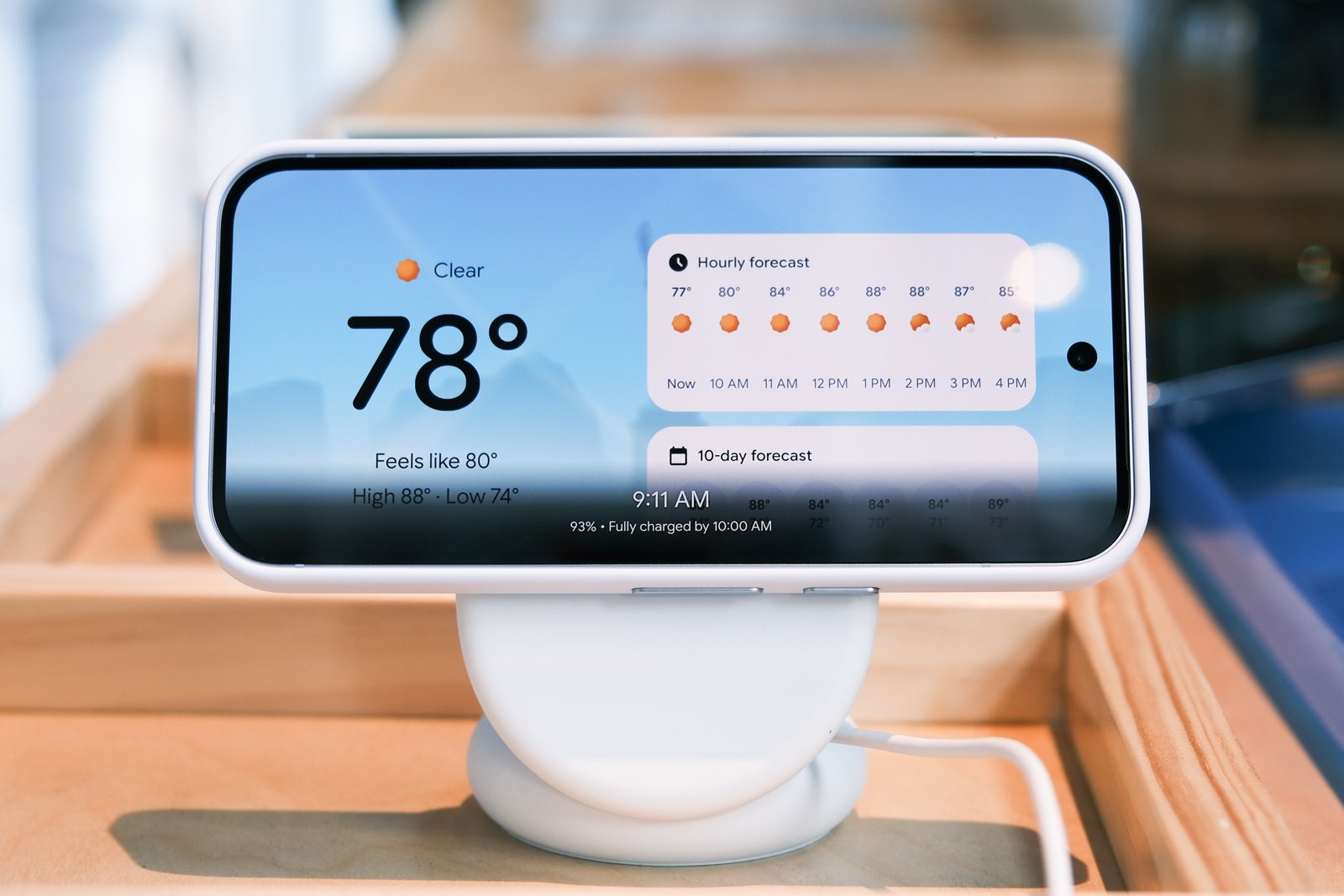
The Pixel 10 Pro isn’t just a software powerhouse; it delivers on the best Pixel hardware features. I don’t think Google gets enough credit for its amazing phone displays, and the Pixel 10 Pro somehow improves over last year’s Pixel 9 Pro with a display that’s brighter and more sharp than any other phone screen you’ll see. It looks great in all conditions, even when I’m taking photos outdoors in bright sunshine.
Those photos will look fantastic as well, and the Pixel 10 Pro (and the Pixel 10 Pro XL, which has the exact same cameras) might be the best camera phone you can buy. I tested the Pixel 10 Pro against the iPhone 16 Pro Max in my review period, and the Pixel took photos that were just as colorful and often more detailed. It handled low-light night photography like it was broad daylight, creating the clearest nighttime photos I’ve ever taken.
I haven’t even gotten to the magnets! I love the magnets in the Pixel 10 Pro, and I used the magnet Pixelsnap features every day during my testing. Google sent along a Pixelsnap charger in addition to the phones, and I used that charger on my desk, but I have plenty of other MagSafe chargers for my iPhone, and the Pixel 10 Pro worked with all of these.
It’s a delight to snap my Pixel 10 Pro onto my fancy Anker MagSafe charging stand, then pull it off and attach my UAG kevlar wallet when I leave. If I run out of battery when I’m out, I can use a MagSafe battery pack – even the original Apple MagSafe battery works with the Pixel 10 family.
It feels like a good time to be a Pixel owner, and the Pixel 10 Pro is definitely a better choice than the base-model Pixel 10. I still think the Pixel 10 Pro XL offers enough extra benefits, with its larger display for great photography work, and its slightly faster charging, that I’d opt for Google’s biggest Pixel if money was no concern. But the Pixel 10 Pro is just as capable in all the ways that count, and it’s the most refined and appealing Pixel phone I’ve ever used.
Google Pixel 10 Pro review: Price & availability
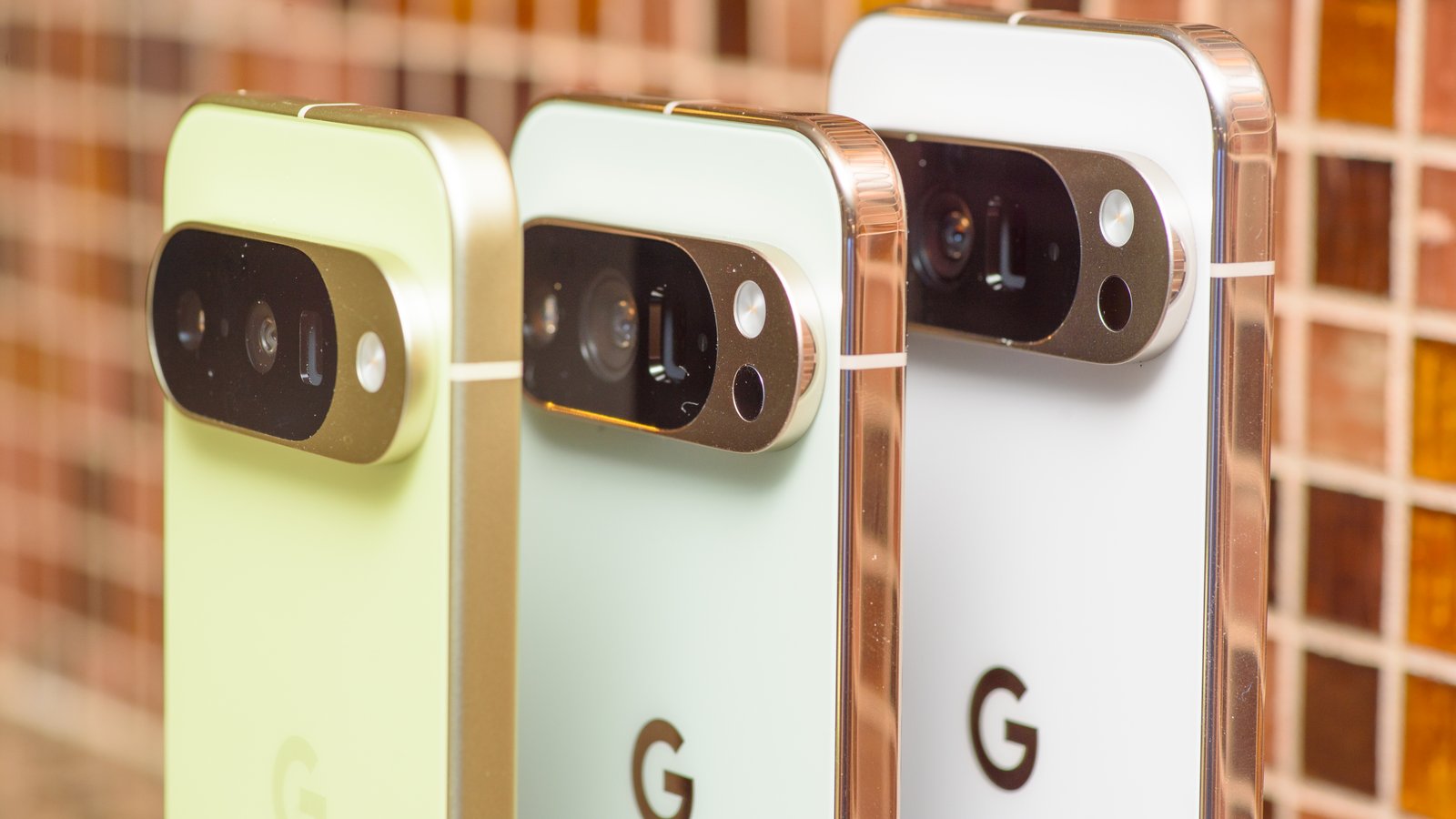
- Starts at $999 / £999 / AU $1,699 for 128GB of storage and 16GB RAM
- Available in muted, professional-looking colors
The Pixel 10 Pro starts at $999 / £999 / AU $1,699 for 128GB of storage and 16GB of RAM. It’s avaiable to order immediately. You can get the Pro models with up to 1TB of storage inside, but that capacity is only available on the (boring) black Obsidian model.
While I like the Pixel design very much, I do miss the days when Pixel phones came in unique color combinations, with two-tone options and unique shades. Today’s Pixel 10 Pro comes in a nice Lemongrass green, the color of my review sample, as well as a bunch of muted tones. Googlers seemed to like the Moonstone color best.
Unlike the Pixel 10 Pro XL, the Pro model starts with only 128GB of storage inside, and I’d recommend an upgrade – especially if you shoot a lot of photos and videos. You can get away with 128GB if you mostly use cloud storage and don’t download large gaming apps, but the Pro model should really start at 256GB. The 1TB model would surely be overkill unless you really have a need for that much storage, like video production.
Thankfully the Pixel 10 Pro has 16GB of RAM inside, though I didn’t see a huge performance boost over the 12GB Pixel 10 model. I suspect that RAM will be even more useful down the road, as AI features that bounce between the phone’s chipset and the cloud for computing tend to use a lot more RAM than basic apps.
The Pixel 10 Pro is priced competitively considering it has almost all of Google’s best features (I wish the charging speed was faster). It costs the same as an iPhone 16 Pro, and it’s less expensive than a Samsung Galaxy S25 Edge or Galaxy Z Flip 7.
|
Storage |
US Price |
UK Price |
AU Price |
|
128GB |
$999 |
£999 |
AU $1,699 |
|
256 Go |
$1,099 |
£1,099 |
AU $1,849 |
|
512GB |
$1,219 |
£1,219 |
AU $2,049 |
|
1TB |
$1,449 |
£1,440 |
AU $2,399 |
Google Pixel 10 Pro review: Specifications
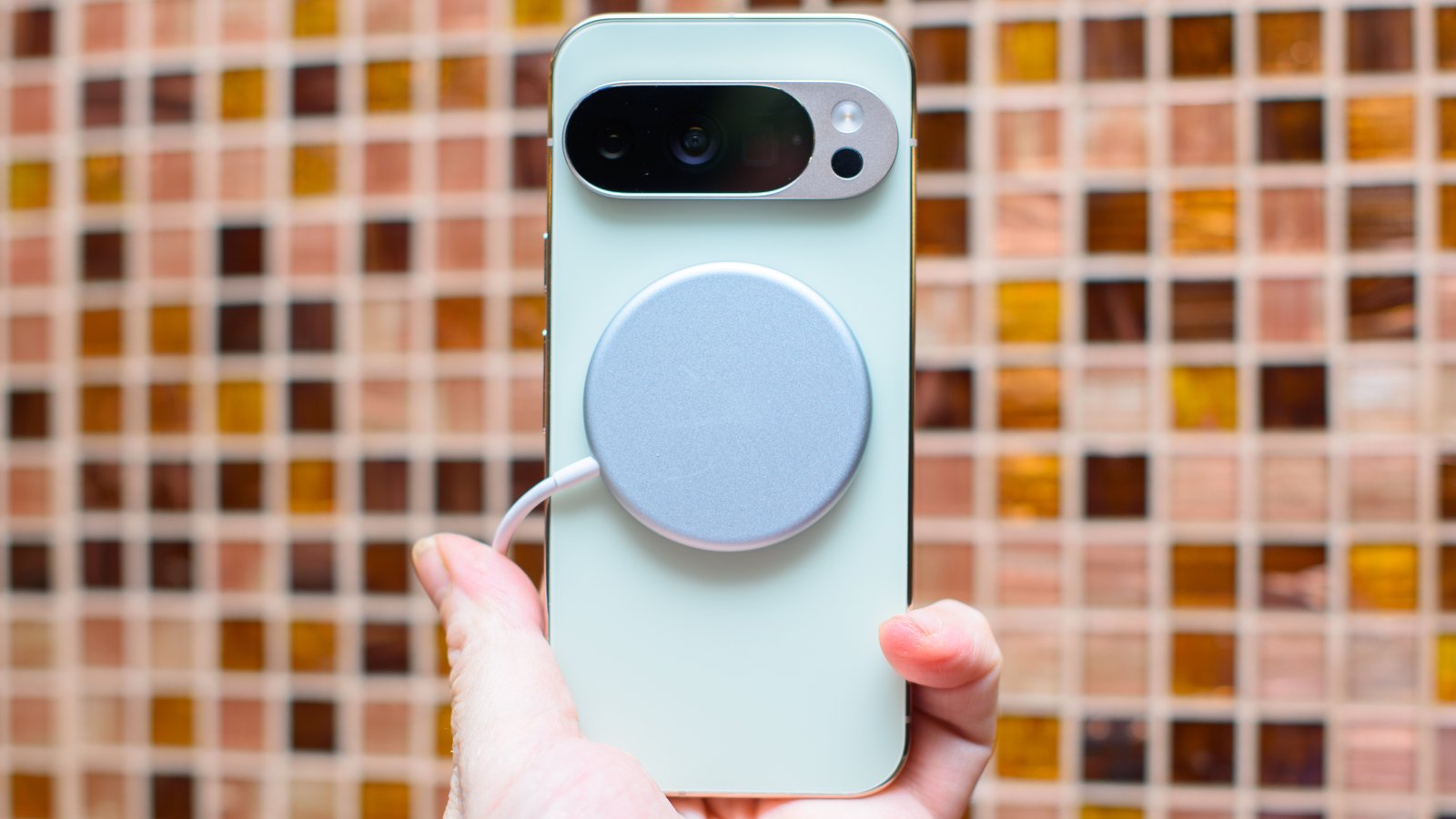
After the Pixel 9 Pro overhauled the Pixel design last year, I didn’t expect a major spec bump this year. Instead, we get minor, meaningful improvements like the Pixelsnap magnetic features, which a great upgrade, even if they don’t make the phone faster.
The camera lenses and sensors have remained unchanged, but Google says the new Tensor G5 chipset features an improved image signal processor, which results in better photos and a better shooting experience.
Compared to other phones at this price, the Pixel 10 Pro holds its own. The iPhone 16 Pro also has three cameras, but it uses smaller sensors on the ultra-wide and telephoto lenses. If you really care about specs, the Samsung Galaxy S25 Plus gives you a bigger, sharper display, and all the cameras and features you might want – that doesn’t make it a better phone, though.
|
Dimensions: |
152.8 x 72.0 x 8.6mm |
|
Poids: |
204g |
|
Afficher: |
6.3-inch Actua display |
|
Résolution: |
1080 x 2424 pixels |
|
Taux de rafraîchissement : |
60-120Hz |
|
Peak brightness: |
3,000 nits |
|
Jeu de puces : |
Google Tensor G5 |
|
BÉLIER: |
12 Go |
|
Stockage: |
128 Go / 256 Go / 512 Go / 1 To |
|
TOI: |
Android 16 |
|
Main cameras |
50MP wide; 48MP ultra-wide; 48MP telephoto (5x zoom) |
|
Selfie camera: |
42MP |
|
Batterie: |
4,870mAh |
|
Chargement : |
30W wired; 15W Qi2 wireless (magnetic) |
|
Colors: |
Obsidian, Porcelain, Jade, Moonstone |
Google Pixel 10 Pro review: Design
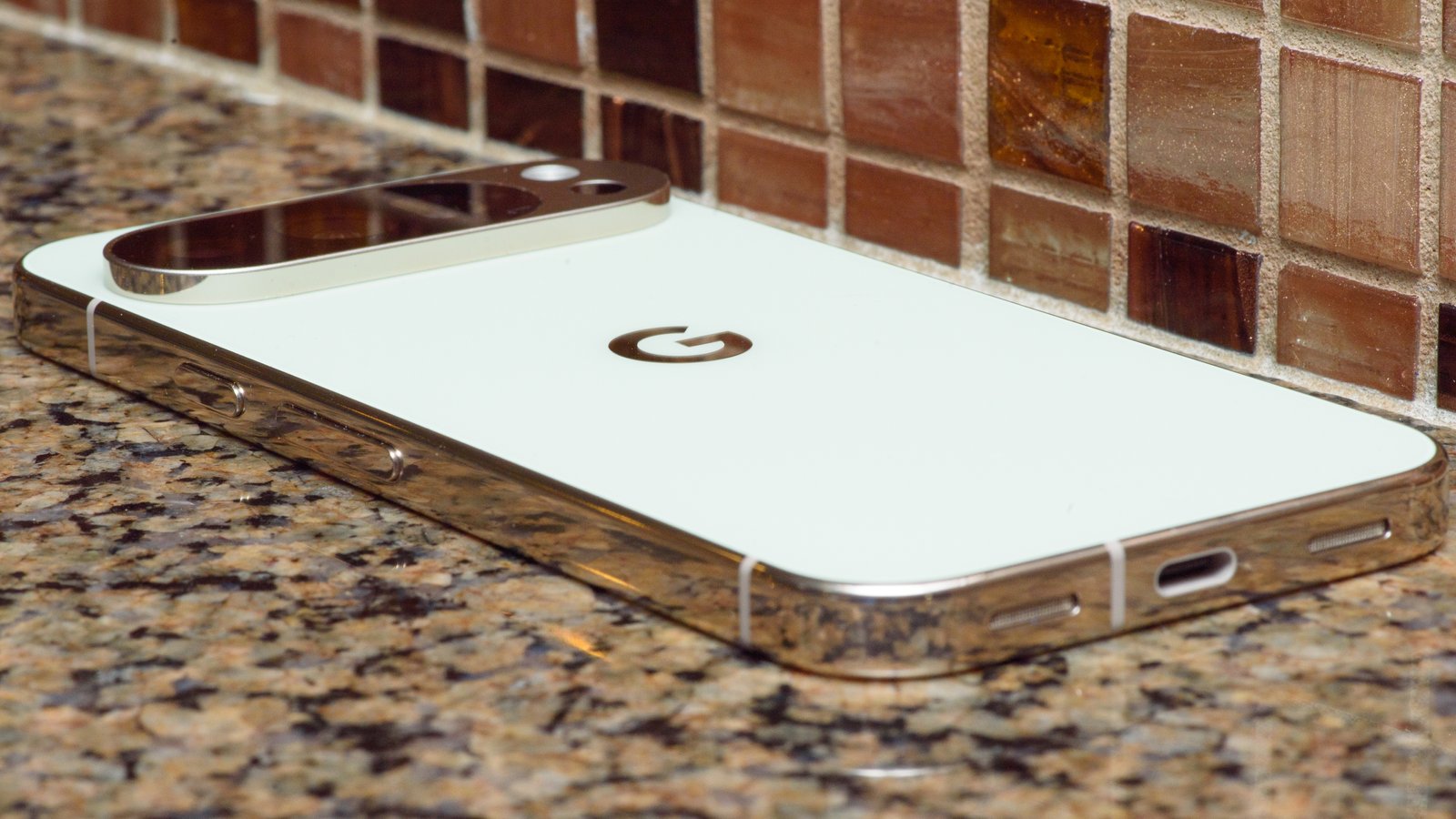
- Nearly identical to the Pixel 10, which is a good thing
- Keeps things simple (with one little exception) – also a good thing
The Google Pixel 10 Pro has a polished, solid feeling that exudes a premium quality. With every generation of Pro Pixel phone the edges seem more polished, the gaps between components more tightly aligned.
I’m using the case that Google supplied with the Pixel 10 Pro – a lemongrass case perfectly matched to my green Pixel 10 review sample. The same case fits both phones, and in fact even my older Pixel 9 case fits the Pixel 10 Pro perfectly. It’s a good design, and I’m happy to see it stick around for another year or so.
The Pixel 10 Pro seems unfussy compared to the latest iPhone 16 Pro. There’s a volume rocker button and a main button that activates Google Gemini, or opens the camera with a double-press. There’s no Action Button, no wonky Camera Control. When did the Pixel become the exemplar of ease and simplicity, and the iPhone the epitome of excess?
To be fair, the Pixel 10 Pro still has the temperature sensor, which is one of the most useless bits of hardware on any smartphone today. It does not work properly. I heated a pan in my oven to various temperatures and checked with a cheap infrared thermometer as well as the Pixel 10 Pro. The Pixel 10 Pro never got the temperature right, and the $15 thermometer was always more accurate.
At least I can ignore that sensor, unlike the extra buttons on my iPhone 16 Pro. I hope Google some day adds a real shutter button to its Pixel phones to complement the excellent cameras – I also hope Google does it right, unlike Apple’s overwrought Camera Control.
- Design score: 4 / 5
Google Pixel 10 Pro review: Display
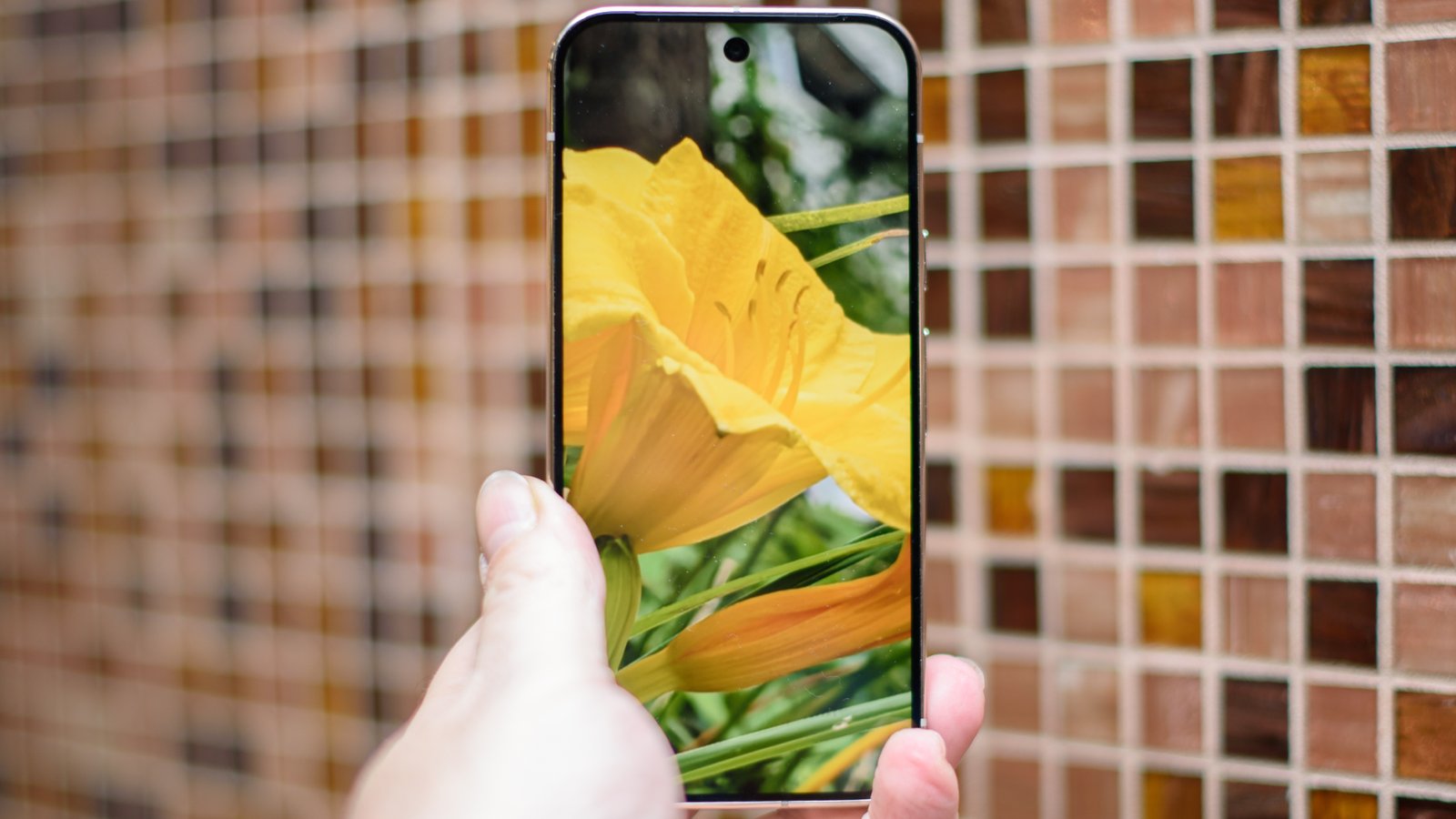
- Excellent display is very bright and colorful
- Even more sharp than the Pixel 10 Pro XL
I can’t recommend the Pixel 10 Pro display strongly enough – it exceeds expectations and makes the Pixel 10 Pro one of the top phones for screen quality. Whether you’re watching clips, taking photos in bright sunlight, or just scrolling through menus and doom, the Pixel 10 Pro is one of the best displays you’ll use.
I do prefer the Pixel 10 Pro XL overall, because I just want more display on my Pixel, but the Pixel 10 Pro has its advantages. Google has packed more pixels per inch onto the 10 Pro, making the display technically more sharp than the Pro XL’s screen. I didn’t really notice the difference, though, and both displays are very crisp.
The Pixel 10 Pro also performed admirably in our Future Labs tests, and roasted the competition with its display power. All phone makers brag about a theoretical peak brightness: Google claims the Pixel 10 Pro can hit 3,300 nits, Samsung claims its phones can peak at 2,600 nits, while Apple says the iPhone 16 Pro can reach 2,000 nits. None of those numbers are real.
Under our most stringent lab conditions, we got the Pixel 10 Pro to blast more than 2,500 nits of brightness from the display. That’s far from the 3,300 claim, but much brighter than the competition. The Galaxy S25 Ultra couldn’t reach 1,900 nits, and Apple’s iPhone 16 Pro was stuck at just above 1,500 nits.
In other words, it wasn’t just my eyes seeing a brighter screen on the Pixel 10 Pro; our tests prove that Google’s Super Actua display is the brightest smartphone screen among all the best phone makers.
- Display score: 5 / 5
Google Pixel 10 Pro review: Software
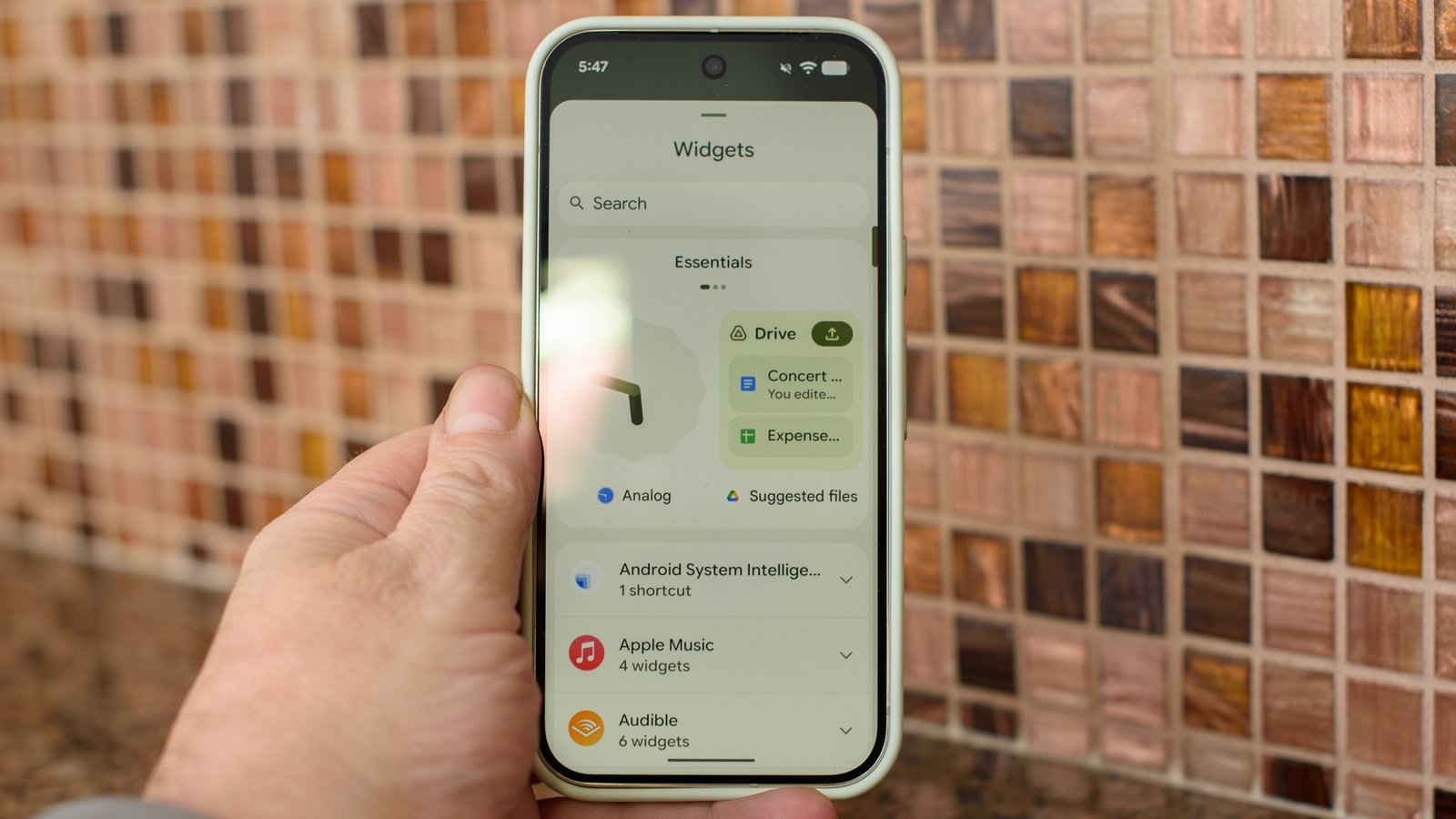
- Useful AI features you won’t find elsewhere (not even on the Pixel 10)
- Magic Cue seems useful, or you can just ignore it
The Pixel 10 Pro has a polished interface that complements the thoughtful hardware design. It’s very easy to set up the phone and use every feature. Google continues to enhance and improve its Pixel version of Android in subtle but meaningful ways, like the surprisingly fun AI wallpaper maker, and the dramatic themes that slowly change the colors of your widgets and app icons as the day progresses.
Google’s latest AI feature is Magic Cue, a tool that offers helpful suggestions with information straight from your Google apps. It will read your messages, your email, your calendar, and many other sources you specify. Then, when you need a specific phone number, or you need the address of the restaurant where you have a reservation, Magic Cue will offer a quick button to that info. You can tap the button or ignore it, that’s that.
Magic Cue works directly on your phone, so you don’t have to share anything with Google – it scans your Gmail, and other apps and data, but the AI modeling is handled on your phone. That means it consumes less power and less cellular data, and it keeps your information private.
I wish it all worked as advertised. Unfortunately, a few of the promised Magic Cue features never worked for me – it could never find my hotel reservations for an upcoming trip. Google thinks I might have made those reservations too long ago – Magic Cue only searches the last month or so of your Gmail, not your whole history.
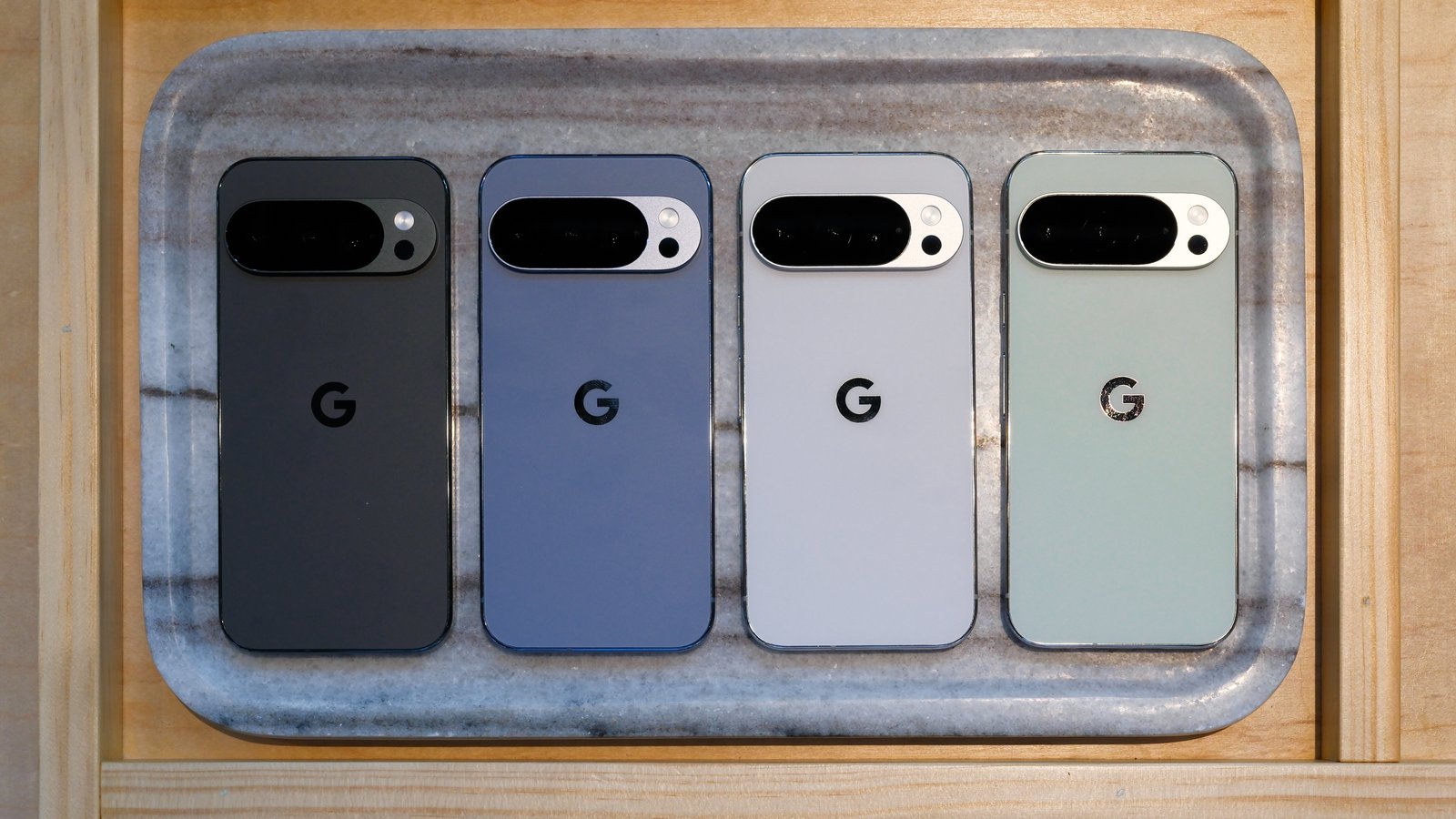
Is Magic Cue a big feature? I think it’s one of the biggest steps forward for a phone interface that integrates AI, and the best thing about it is that you may never know you’re using it. Unless you long-press on one of its suggestions, you won’t even see the name ‘Magic Cue,’ or have to open a Magic Cue app to make it work. It happens quietly, and it offers useful tools. I think this is the future of smartphone AI, and I’m excited to see where it goes.
In addition to Magic Cue, the Pixel 10 Pro and the Pixel 10 Pro XL get some AI features the Pixel 10 doesn’t have, and I find these invaluable. I’ve been using a Pixel 9 Pro as my primary work phone this past year, and I let it answer and screen all of the calls from phone numbers I don’t recognize.
The Pixel 10 Pro has the same great call-screening feature, as well as an effective note-taking tool that will transcribe your phone conversations as easily as it transcribes a business meeting. It warns everybody on the call that it’s taking notes, so there are no privacy concerns.
Google’s Pixel 10 Pro is packed with features, but unlike on Samsung’s Galaxy S25 devices these don’t get in the way. While Samsung literally has pop-up windows and slide-in panels that appear from nowhere and take up screen space, I appreciate that you can take or leave most of Google’s latest features, and they won’t bug you too much. Even Apple can get tiresome with its Journal app reminders, while the new Google Journal app didn’t seem to bother me as often.
- Software score: 5 / 5
Google Pixel 10 Pro review: Cameras
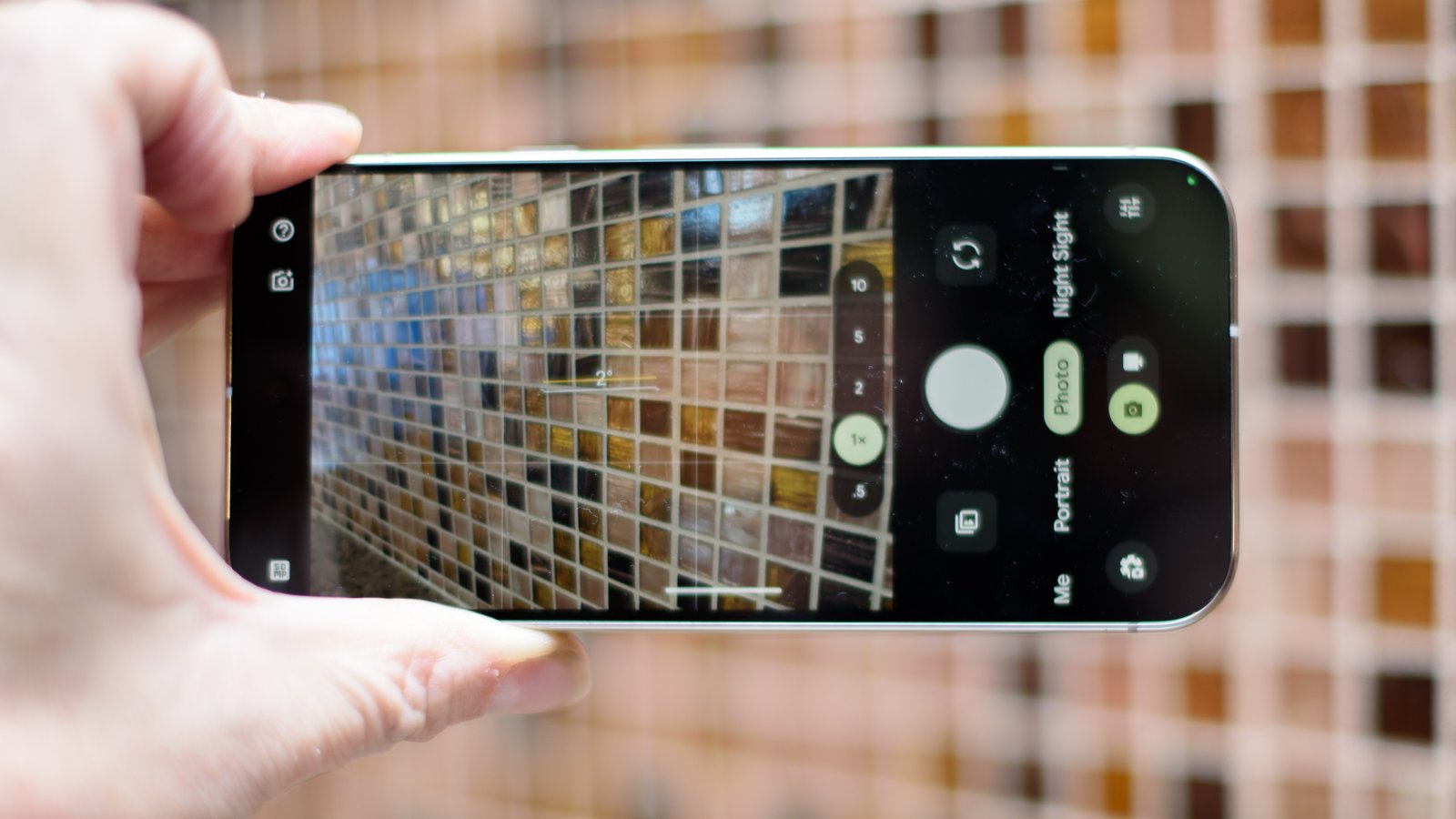
- Cameras make better images than my iPhone 16 Pro
- New AI features are interesting, but have too many drawbacks
The Pixel 10 Pro features some of Google’s best cameras ever on a Pixel phone, which makes this one of the best camera phones you can buy. I tested this phone against my iPhone 16 Pro, and it usually produced images that were just as colorful but more detailed than what the iPhone cameras could manage.
For low-light photos, there was no contest. The Pixel simply blew the iPhone away with more visibility, sharper focus, and better colors at night.
The Pixel 10 Pro has a 5x optical zoom lens, and you can use AI to zoom in much further. If you switch to the 12MP resolution, the Pixel 10 Pro will zoom in to 100x, which is honestly farther than the phone can handle – at that range, there was not enough image stabilization to keep my subject in frame while my hands shook slightly.
The Pixel 10 Pro created zoomed images that looked more clear with less noise than similar shots taken with the iPhone 16 Pro and its 5x lens and 25x digital zoom.
Sometimes the Pixel 10 camera went too far and smoothed textures I would have liked to keep, but the end results were always more pleasing and more impressive for sharing than my iPhone and Galaxy shots, in spite of what was lost.
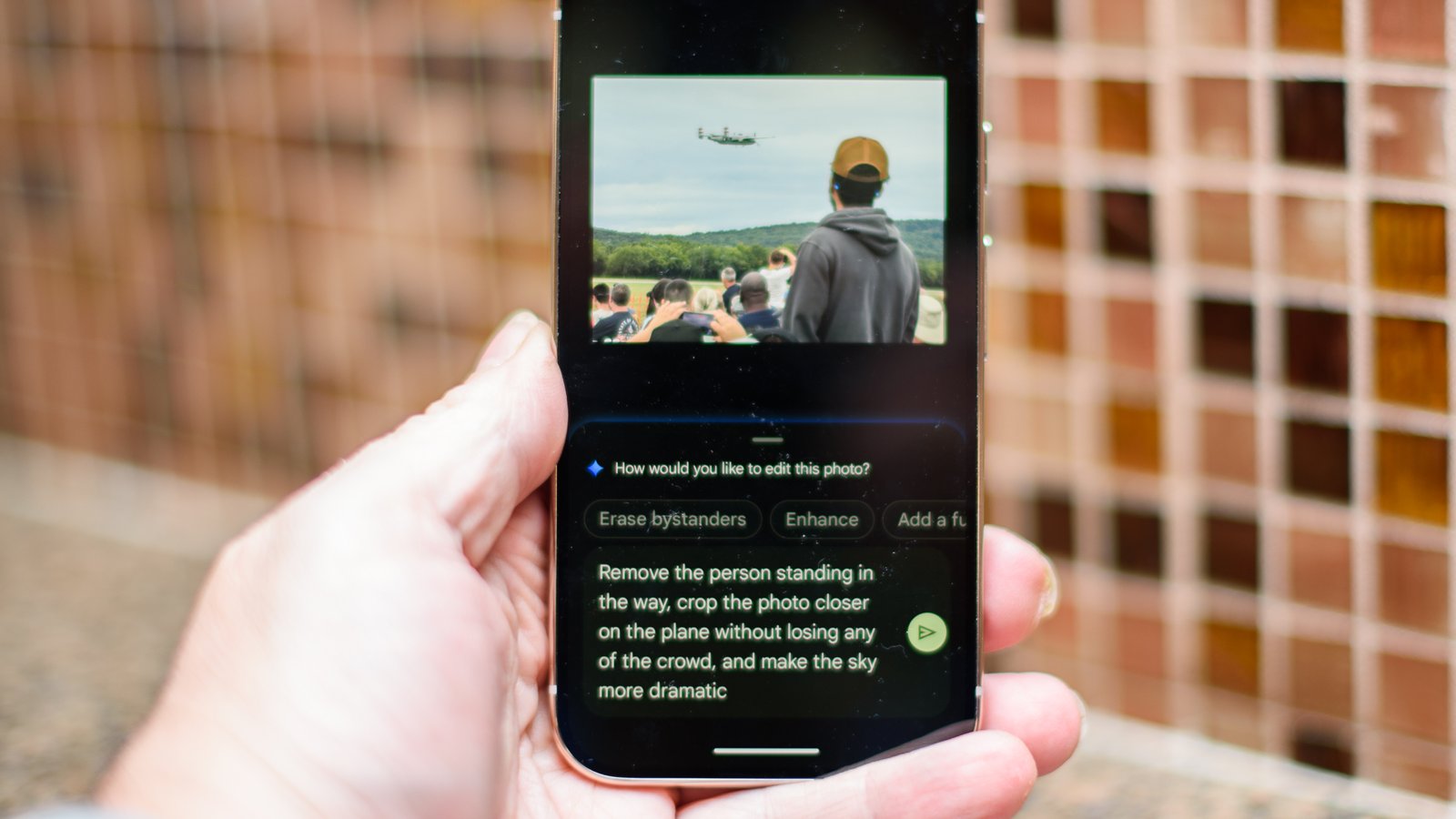
There’s a new Camera Coach feature that uses an AI tool to analyze your shot and offer suggestions to make it better. I talk about this in much more detail in my Pixel 10 review, but the upshot is that it’s an interesting teaching assistant that can give you some useful photo framing tips. The usual AI warnings and caveats about stealing human knowledge without attribution still apply.
Google has also improved its editing tools in Google Photos. Instead of editing a photo yourself, you can use natural language to describe to Google’s AI what you want done to your photo. You might say “remove that bystander” or “make the sky more dramatic,” and Google will do its best to match your request. In my experience, it got two-thirds of my edit suggestions right.
The final results are still very good, but if you have any experience with photo editing you can probably perform simple edits and tweaks faster yourself. The delay waiting for the edits was frustrating when the final results weren’t what I wanted.
- Camera score: 5 / 5
Google Pixel 10 Pro review: Camera samples
Google Pixel 10 Pro review: Performance
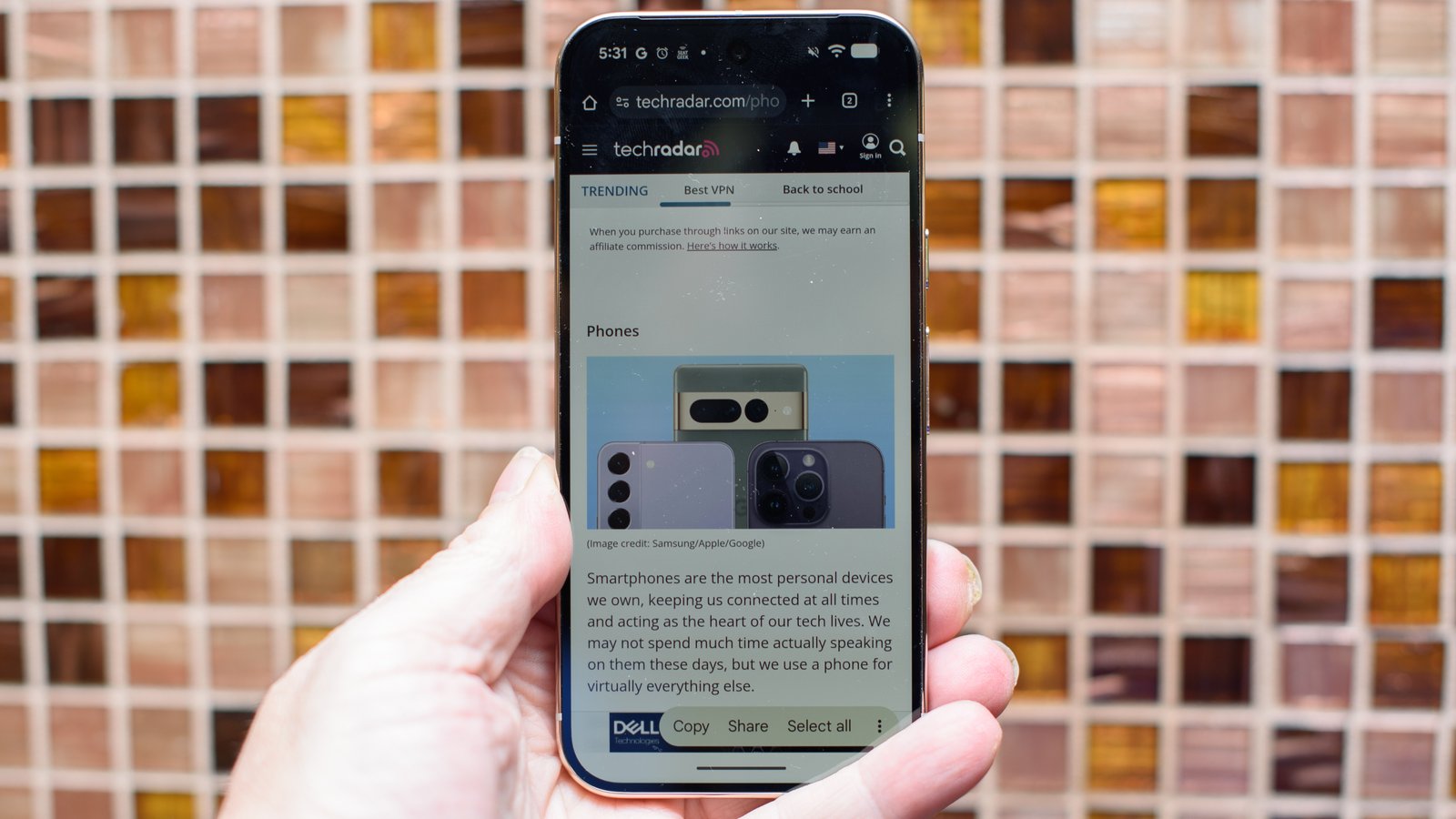
- Performance lags behind all other phones at this price
- It’s not even faster than the Pixel 10? Not so Pro…
Like every Pixel for the past five years or more, the Pixel 10 Pro will disappoint smartphone buyers looking for the fastest phone around. The Tensor G5 chipset inside is frankly a bit slow, and while it doesn’t make a difference in most use cases, there are times when the Pixel 10 Pro suffers.
Browsing the new Material 3 Expressive interface designs, swiping through long menus of apps and lists, and launching my apps were all remarkably fast. I was expecting more delay, but the Pixel 10 Pro navigates its own interface like a race car.
The only real delay I saw was when using the more advanced camera features. Shooting basic photos at 12MP resolution, I had no trouble, but when I upped the resolution to 50MP, or if I added more features like Top Shot or motion photos, there was often a long delay.
After I pressed the shutter button, I couldn’t take another shot for a few seconds, which feels like a lifetime when I’m trying to snap the perfect picture. I definitely missed shots because of this delay.
This isn’t a new thing for Pixel phones. I noticed the same problem on my Pixel 9 Pro last year, though it happened more frequently on last year’s phone. Maybe Google’s performance is improving, but if the Tensor G5 isn’t even fast enough to keep up with the Pixel 10 Pro’s camera, then Google needs to seriously rethink its processor strategy. It’s time to ask Qualcomm for some help, or maybe even MediaTek. Anything would be better than another Tensor chip in a Pixel phone.
The strangest performance anomaly is the Pixel 10 Pro’s benchmark scores compared to the Pixel 10 base model. With less RAM – 12GB instead of the 16GB on the Pro model – the Pixel 10 still beat the Pixel 10 Pro in many benchmark tests.
On CPU tests like Geekbench 6.4, and on graphics tests like the 3DMark Wild Life Extreme Unlimited test, the Pixel 10 scored higher than the Pixel 10 Pro and Pixel 10 Pro XL. That seems like terrible tuning on Google’s part. There should be no reason why the less expensive phone beats the Pro models with more RAM, faster storage technology, and other supposed benefits.
- Performance score: 3 / 5
Google Pixel 10 Pro review: Battery
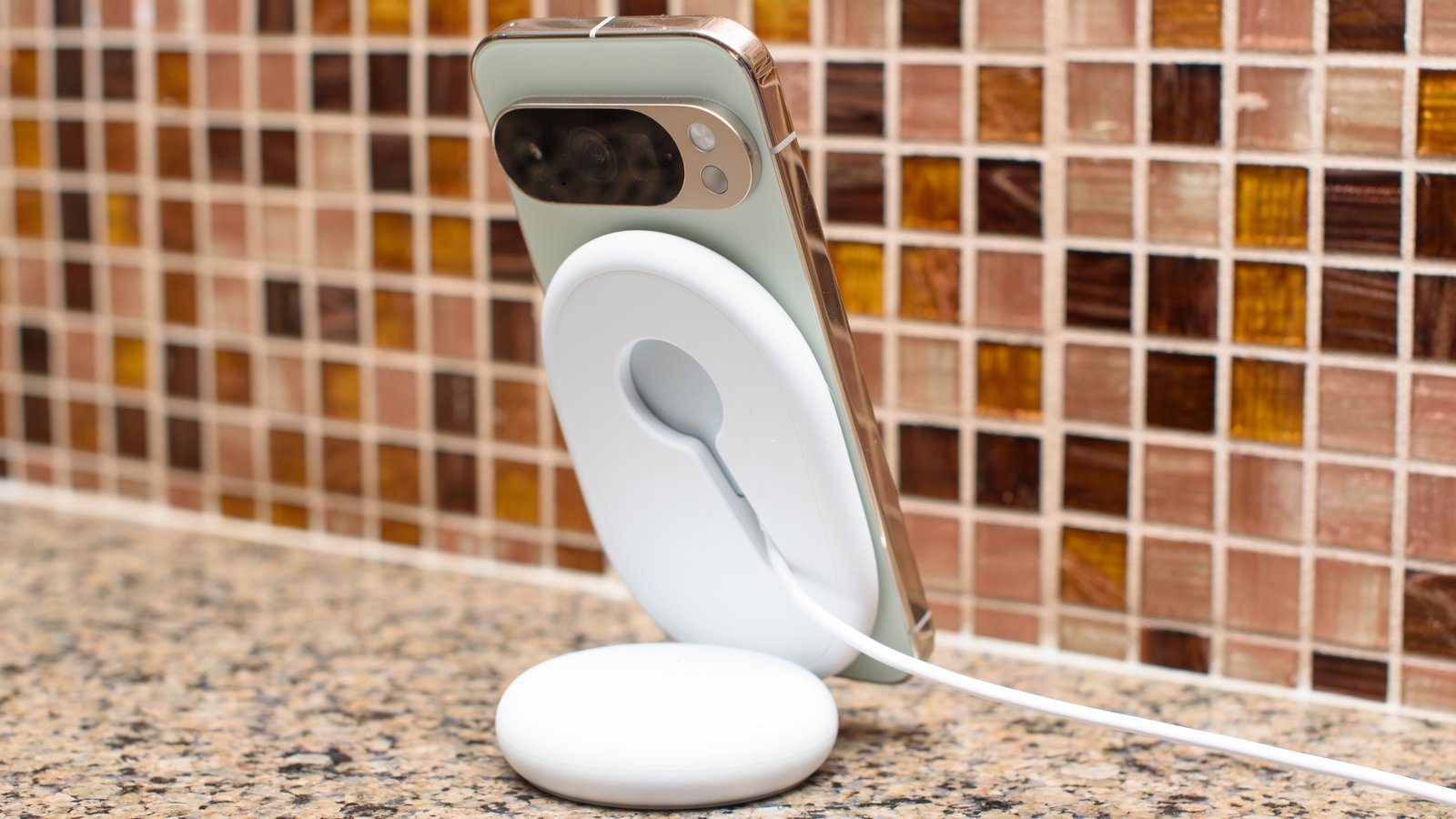
- Battery life should be much better – I blame the Tensor chips
- Magnetic charging helps a lot, but charging is still a problem
The Pixel 10 Pro lasted through a full day of use on most days in my week testing the latest Pixel phones. There were only two days when I needed to charge the phone before bed time, and those were both days with lots of video shooting, such as my day at the Orange County, New York air show – shooting airplane videos drains the battery faster, apparently.
What makes this so frustrating is the Pixel 10 Pro hasn’t improved much over the Pixel 9 Pro. In Future Labs battery tests, the 10 Pro lasted about 15 minutes longer than last year’s Pro model. I expected much more improvement.
Why? Because every other Android phone has improved dramatically this year, if they are packing a Qualcomm Snapdragon 8 Elite inside. Phones like the Galaxy S25 or OnePlus 13 that upgraded to Qualcomm’s latest chip also saw hours of battery life improvements.
Qualcomm changed my expectations for what a new chipset could offer, and if I was already disappointed by the Tensor G5’s performance then the mediocre battery life is just the double whammy that should put the nail in the Tensor coffin. Let’s try something new next year, okay, Google?
Having magnetic charging helps, mostly because I also have an iPhone and I’ve been collecting MagSafe chargers and accessories for a few years. They all work perfectly with the Pixelsnap magnets in the Pixel 10 Pro, so it was easy to keep my phone topped up with power throughout the day. I just popped it onto my desk charger, or connected to my bedside charging stand.
I have these magnetic stands everywhere, and the convenience outweighs the slower charging they offer. Stock up when they go on sale, you’ll be thankful when your phone always seems to have just enough juice.
- Battery score: 3 / 5
Should you buy the Google Pixel 10 Pro?
|
Valeur |
A more refined and interesting phone than similar flagships like the iPhone 16 Pro or Galaxy S25 Plus, but there is plenty of scope for Google to offer more (or drop the price for the holidays). |
4/5 |
|
Conception |
Excellent design refines the Pixel look even further, with great materials and color options that are classy and durable. No need to change anything here; the Pixel was already a great-looking phone. |
4/5 |
|
Display |
The Pixel 10 Pro’s standout feature. Google’s phone displays are always a knockout, and this screen is brighter and more sharp than any other display I’ve seen (and I’ve seen them all). |
5/5 |
|
Software |
A mix of useful new tools and questionable AI additions. The Pro model is worth the upgrade, thanks to AI features you won’t find on cheaper Pixel phones, but some new features like Magic Cue didn’t work the way Google promised. |
5/5 |
|
Cameras |
Some of the best camera you can buy on a smartphone, with unique AI tools and helpers. The AI goes too far sometimes, but the end results are more impressive than what your friends are shooting. |
5/5 |
|
Performance |
Lackluster performance from the Tensor G5 chip. Most features run fast enough, but I found lag in the camera between shots, and the chipset wasn’t as fast or efficient as any other recent Android flagships. |
3/5 |
|
Battery |
Battery life was fine, but every other Android phone saw major gains with faster chips inside, while the Tensor-powered Pixel was left behind. Pixelsnap and magnetic charging help bridge the gap, and keep the phone charged enough to last you a day. |
3/5 |
Buy it if…
Don’t buy it if…
Also consider…
| Row 0 – Cell 0 |
Google Pixel 10 Pro |
Google Pixel 10 Pro XL |
Apple iPhone 16 Pro |
|
Price |
$999 / £999 / AU $1,699 |
$1,199 / £1,199 / AU $1,999 |
$999 / £999 / AU $1,799 |
|
Display |
6.3-inch Super Actua |
6.8-inch Super Actua |
6.3-inch Super Retina |
|
Charging |
30W wired; 15W wireless |
45W wired; 25W wireless |
30W wired; 25W wireless |
|
Battery Results (HH:MM:SS) |
13:43:30 |
14:20:57 |
14:07:53 |
How I tested the Google Pixel 10 Pro
I tested the Google Pixel 10 Pro for a week, alongside the Pixel 10 and Pixel 10 Pro XL. I used the Pixel 10 Pro as a work phone with my high-security work accounts. I loaded the phone with more than a hundred apps, and multiple Google accounts.
I used the Pixel 10 Pro as a camera, testing every camera feature. I used AI features to ask questions and generate sample images. I connected Magic Cue to all of my personal Google account information, and I fed the Pixel 10 Pro a regular diet of screenshots of my personal dealings for the Screenshots app.
I connected the Pixel 10 Pro to my Pixel Watch 3, my Pixel Buds Pro, and many other Bluetooth headsets and devices. I used Android Auto in my Kia and my friends’ Acura and Subaru cars, and connected to Bluetooth in an older BMW.
I’ve been testing phones for more than 20 years, since the days of BlackBerry and Palm OS smartphones and Samsung flip phones. I’ve tested hundreds of devices myself, and our Future Labs experts have tested hundreds more.
Future Labs tests phones using a mix of third-party benchmark software and proprietary, real-world tests. We use Geekbench, CrossMark, JetStream, WebXPRT and Mobile XPRT, and 3DMark for performance testing. We test a phone’s performance on video editing tasks using Adobe Premiere Rush. We also measure display color output and brightness.
For battery testing, we have proprietary rundown tests that are the same for every phone, which we use to determine how long it takes for the battery to run down.
First reviewed August 2025








